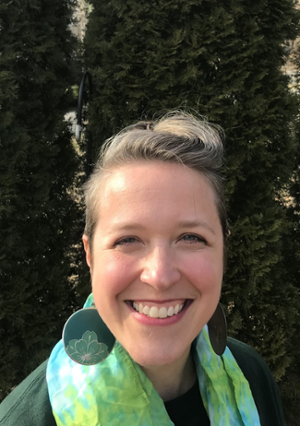Dr. Jessica Hughes

1. What innovative practice did you incorporate into your classroom?
I've adopted zero textbook cost, open educational resources (ZTC OER), in all of my classes in the Department of Communication and Theatre. To do this, I've curated a range of course materials from online textbooks, digital media, academic articles, and written my own materials to supplement and synthesize this range of sources.
2. When did you implement the new practice into your classroom?
I was already using OER in a couple of classes when I started at Millersville in 2018. The Open Textbook Initiative (OTI) gave me the support I needed to commit to 100% ZTC OER in all of my classes. As part of the first OTI cohort in 2019, I created an open source catalogue of OER in Communication, Media, and Theatre subject areas. Given the growing wealth of resources I found for that project, I realized using all OER was feasible.
3. Did the students willingly accept the use of the new practice? What were the reactions of the students?
Every semester, a few students email me to confirm that they don't have to buy books for class, like they think that must be a mistake. When I confirm that this is the case, some have expressed happiness and gratitude for not having to buy books. In general, I've found students very accepting, but I've also found that some students approach OER differently than they would a textbook. In one of my first classes this semester, one student mentioned that "we don't have readings in this class" and I quickly corrected them. Just because students don't have to buy a book, they still have plenty of assigned reading to do!
4. How has the use of the new practice positively affected the classroom learning environment?
I think the mix of content keeps things interesting for me and for students. Because I'm always on the lookout for new materials to bring in and tweaking the materials I create, I can incorporate students' interests and recommendations into coursework. The multimodal content allows students to engage in different ways. And I hope that zero textbook costs are some help, especially now that so many students have lost employment or are supporting other family members who are out of work. When I was in college, I used to do my homework sitting on the floor of the bookstore during the first few weeks because I couldn't afford to pay for books until my first few work study paychecks came in. Not having to worry about buying books for even one of my classes then would have made a big difference.
5. How has the use of the new practice affected student engagement in the classroom and the level of participation?
The fact that all students can access materials from day one helps to ensure that all students can actively participate from the start. In several of my classes, students pick readings to write about and lead discussions on, which enables them to deeply engage with readings that align with their interests. I create a lot of D2L pages with videos or podcasts embedded alongside texts and activity prompts, as many students say they enjoy this content.
6. What challenges did you encounter when you were implementing the new practice?
One challenge I've found is that some students have a harder time picking out key concepts and drawing connections to course objectives when reading texts from non-academic sources or watching videos. This has led me to work on teaching different reading skills and clearly communicating learning goals to help students get the most out of the varied materials that comprise course content.
The time needed to curate and create so many sources for each course adds another challenge. I enjoy this work, so it's mostly a pleasure, but it has consumed a lot more bandwidth and required more effort than selecting textbooks used to. This comes from not only needing more time to find or write sources, but also to ensure that they're accessible to all students. At first, I didn't account for the time I'd need to make or correct transcripts for videos and podcasts or describe images and gifs or link to PPTs and docs. I quickly realized I would need to bank more time for prepwork.
7. How did attending Camp IDEA or a CAE Professional Development session contribute to your learning and use of the innovative practice?
The institutional support at MU has really helped me to grow as a teacher! Camp IDEA gave me skills I needed to design engaging and accessible course content in D2L. Project Pedagogy+ helped me to be more intentional about encouraging specific dispositions and fostering connections in my online classes. The OTI upped my OER game. And the CAE Hackathon got me thinking about how to publish my own OER. I'm so grateful to be in community with such talented teachers and to have such a wealth of opportunities to learn from and with folks in the CAE as well as our awesome librarians and instructional support specialists.